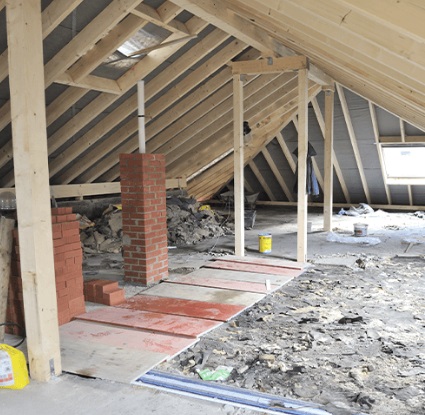Lung Cancer: Unraveling the Complexities of a Deadly Disease

Introduction
Lung cancer remains one of the most pressing health concerns globally, claiming countless lives each year. This insidious disease, characterized by the uncontrolled growth of cells within the lungs, often goes undetected until it has reached an advanced stage. Understanding the intricacies of lung cancer, its causes, symptoms, and treatment options is crucial for early detection and effective management. In this comprehensive article, we delve into the various aspects of this deadly disease, with a particular focus on the cost of lung cancer treatment in India.
Types of Lung Cancer
Lung cancer is primarily classified into two main categories: Non-Small Cell Lung Cancer (NSCLC) and Small Cell Lung Cancer (SCLC). NSCLC, the more common type, accounts for approximately 85% of cases and includes several subtypes:
Non-Small Cell Lung Cancer (NSCLC)
- Adenocarcinoma: This is the most prevalent subtype of NSCLC, often found in the outer parts of the lungs. Adenocarcinoma is more likely to occur in non-smokers and is the most common type of lung cancer in women and younger individuals.
- Squamous Cell Carcinoma: This subtype is usually linked to a history of smoking and is typically found in the central part of the lungs, near the bronchi.
- Large Cell Carcinoma: This type of NSCLC can appear in any part of the lung and tends to grow and spread quickly, making it more challenging to treat.
Small Cell Lung Cancer (SCLC)
SCLC accounts for the remaining 15% of lung cancer cases and is known for its aggressive nature and rapid spread to other parts of the body. SCLC is strongly associated with smoking and is considered the most aggressive form of lung cancer.
Causes and Risk Factors
The primary risk factor for lung cancer is smoking, which is responsible for approximately 85% of all cases. Both active smoking and exposure to secondhand smoke significantly increase the risk of developing the disease. Other risk factors include:
- Exposure to Radon Gas: Radon is a naturally occurring radioactive gas that can accumulate in homes and buildings. Long-term exposure to high levels of radon can increase the risk of lung cancer.
- Occupational Hazards: Certain workplaces expose individuals to carcinogens, such as asbestos, arsenic, and diesel exhaust, which can contribute to the development of lung cancer.
- Air Pollution: Long-term exposure to polluted air, particularly in urban areas with high levels of industrial emissions, can also increase the risk of lung cancer.
- Genetic Factors: A family history of lung cancer can indicate a genetic predisposition, raising an individual’s risk of developing the disease.
- Personal or Family History of Lung Disease: Conditions like chronic obstructive pulmonary disease (COPD) can increase an individual’s susceptibility to lung cancer.
Symptoms and Diagnosis
Early-stage lung cancer often lacks noticeable symptoms, making it challenging to detect in its initial phases. However, as the disease progresses, common symptoms may include:
- A persistent cough that worsens over time
- Chest pain that is often worse with deep breathing, coughing, or laughing
- Hoarseness
- Weight loss and loss of appetite
- Shortness of breath
- Fatigue or weakness
- Coughing up blood or rust-colored sputum
- Recurrent infections such as bronchitis and pneumonia
Diagnosing lung cancer involves a series of tests and procedures, including:
- Thorough medical history and physical examination
- Imaging tests, such as chest X-rays and computed tomography (CT) scans, to detect abnormal masses in the lungs
- Sputum cytology, which involves examining sputum (mucus) under a microscope to look for cancer cells
- Biopsy, where a small sample of tissue is removed for examination. This can be done through various methods, such as bronchoscopy, needle biopsy, or surgical biopsy.
- Mediastinoscopy, a procedure to examine the central part of the chest (mediastinum) and obtain tissue samples
- Positron Emission Tomography (PET) scan, a specialized imaging test that helps detect the spread of cancer
Treatment Options
The treatment approach for lung cancer depends on various factors, including the type and stage of the disease, as well as the overall health of the patient. Common treatment modalities include:
- Surgery:Lobectomy: Removal of a lobe of the lung
- Radiation Therapy:This treatment uses high-energy rays to kill cancer cells and can be used alone or in combination with other treatments.
- Chemotherapy:Chemotherapy involves the use of drugs to destroy cancer cells and is often used when the cancer has spread beyond the lungs.
- Targeted Therapy:Targeted therapy uses drugs that target specific genetic changes in cancer cells, making them more effective for certain types of lung cancer.
- Immunotherapy:This treatment boosts the body’s immune system to fight cancer and is used for certain types of lung cancer.
- Palliative Care:Palliative care focuses on relieving symptoms and improving the quality of life for patients with advanced lung cancer.
In some cases, a combination of these treatment modalities may be employed to achieve the best possible outcome.
Lung Cancer Treatment Cost in India
One of the significant advantages of seeking lung cancer treatment cost in India is the relatively lower cost compared to many Western countries. However, the actual cost can vary widely based on several factors, including the type of treatment, the stage of cancer, the hospital, and the city.
Factors Influencing Treatment Costs
- Type of Treatment:Surgical procedures, such as lobectomy or pneumonectomy, can cost between INR 2,00,000 and INR 4,00,000 (approximately USD 2,500 to USD 5,000).
- Hospital and Location:The cost of treatment varies between hospitals and regions. Major cities like Delhi, Mumbai, and Bangalore tend to have higher treatment costs compared to smaller cities.
- Duration of Treatment:The total cost will also depend on the duration of the treatment plan. Prolonged treatment or combination therapies can increase the overall expense.
- Diagnostic Tests:Regular diagnostic tests, such as CT scans, PET scans, and biopsies, contribute to the overall cost. Each test can cost between INR 5,000 and INR 20,000 (USD 62 to USD 250).
- Hospital Stay and Post-Treatment Care:The length of hospital stay and the requirement for post-treatment care and medications also affect the total cost.
It is important to note that these costs are approximate and can vary based on individual patient needs and treatment plans. Patients should consult with their healthcare providers and discuss the financial aspects of their treatment to ensure they make informed decisions.
Conclusion
Lung cancer remains a formidable challenge in the healthcare landscape, but advancements in medical technology and treatment strategies are offering hope for better outcomes. Early detection through regular screening, especially for high-risk individuals, is crucial for effective management of the disease. In India, the cost of lung cancer treatment is relatively affordable compared to many other countries, making it a viable option for both local and international patients.











